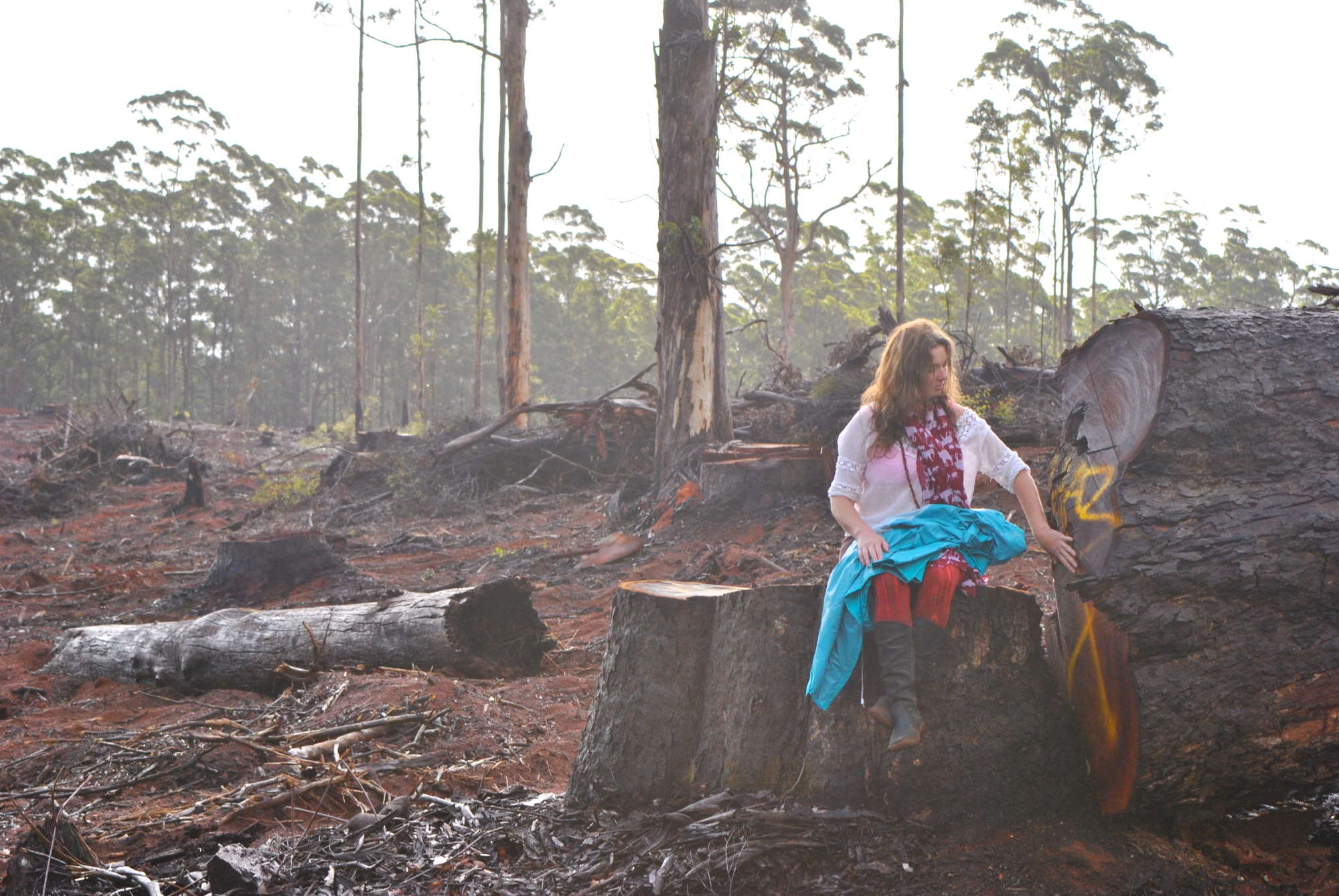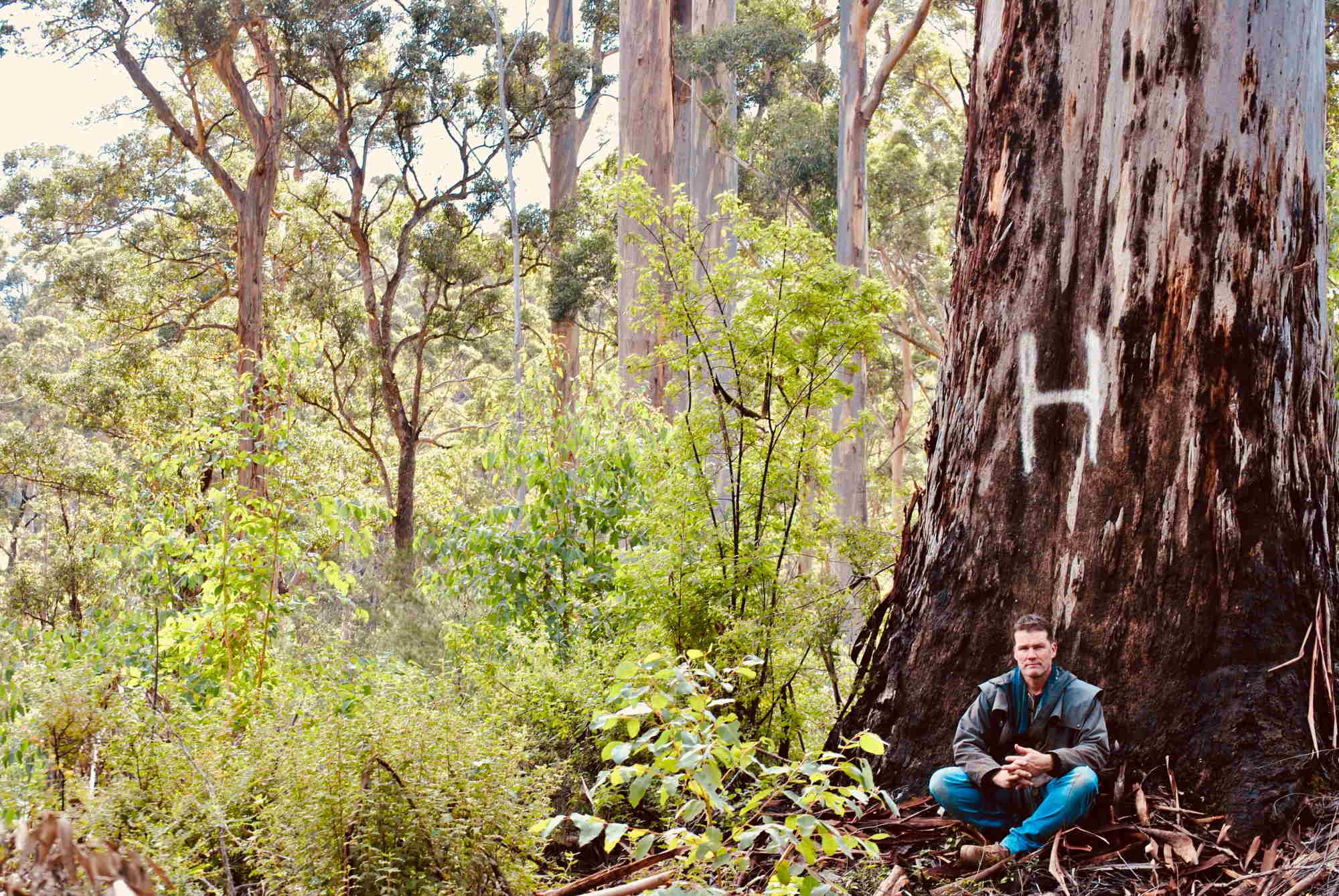2020-01-07
Despite the promise of protection of WA’s old-growth forests in 2001, dubious definitions of what constitutes “old-growth” allow continued destruction of old-growth forests
By Jess Beckerling, Campaign Director, Forests For Life; Convener, WA Forest Alliance
In 2001, when the Gallop Government was elected promising to protect old-growth forests, there was jubilation and relief. After a decade of powerful and relentless community campaigning, and a century of profound losses for the forests, rivers and wildlife, a major policy change had been secured.
I was watching the election with a group of dear friends and fellow blockaders in a house in Nornalup. After Anthony Green declared the election results, I felt a sinking sensation. The success we were celebrating didn’t feel complete or trustworthy and as much as I didn’t want to be a downer at such a momentous time, I felt a disquiet I couldn’t quite describe.
Now I can. It was a huge victory. Thanks to the work of thousands of people, we collectively secured 230,000 hectares of old-growth forests in formal conservation reserves. But the fundamental reality of the logging industry wasn’t changed. Magnificent, irreplaceable ancient forests that are critically important for climate, culture, wildlife and water are still being intensively logged to feed an insatiable and profoundly wasteful industry.
The definition of ‘old-growth’ was deliberately rewritten to minimise the amount of forest that would be off-limits to the industry ‒ and we’re still fighting today to protect what should’ve been protected in 2001.

The definition of old-growth karri being used by State Government agencies, The Department of Biodiversity, Conservation and Attractions (DBCA) and the Forest Products Commission (FPC), says that karri is only old-growth when it is ‘uncut’. Imagine you’re walking through an ancient karri forest, with massive old karri and marri trees, nesting hollows for birds and mammals and a beautiful, diverse under-storey. Eventually, you come across a stump from one tree that was cut down at some time in the last 150 years. That one stump automatically disqualifies 2 hectares of the forest you’ve been walking through from old-growth status, and the whole area can now be clear-felled.
There is another problem that results from what the State Government agencies call the minimum area rule. It says that an old-growth karri forest has to be at least 2 hectares in size, and it has to be square. Long, narrow areas of old-growth or patches with winding boundaries perhaps along a stream or road are also disqualified, even where there are no stumps in the forest at all, i.e., it has never been logged but doesn’t satisfy the minimum area rule.

In the jarrah forests, a recent (March 2017) change to the procedures for identifying old-growth made the situation worse than it had been for the previous 16 years. Until 2017, the Conservation Commission of WA was responsible for old-growth assessments, and survey teams used to go into the forest and do surveys to see whether the forest still had old-growth characteristics even if there had been light logging in the past. If a forest had a benchmark figure of around 5 stumps per hectare and an intact old-growth canopy, it was still considered old-growth forest.
Now that the Department of Biodiversity, Conservation and Attractions (DBCA) does the assessments, there are no surveys to consider canopy maturity. Instead, where there are 6 stumps found in a 2-hectare square of jarrah forest (an average of 3 stumps in one hectare), that forest is automatically disqualified from old-growth status regardless of whether the forest still has old-growth forest characteristics. DBCA also disqualifies half-hectare cells if they have more than 2 stumps in them.
Another problem is that if jarrah forest is ‘affected’ by Phytophthora cinnamomi (jarrah dieback), it is automatically disqualified from old-growth status. This problem is not new. It’s been around since old-growth mapping was done in the 1990s for the WA Regional Forest Agreement, and fixing it is long overdue.
The minimum area rule that wrongly disqualifies small and irregularly shaped old-growth karri forest also applies to old-growth jarrah forest, leaving genuine old-growth forest available for intensive logging.
It is critical that the definition of old-growth be corrected to protect old forests with ecologically mature, intact ecosystems. It is a fundamental principle of good environmental management that you first of all protect the most resilient areas that have had the least unnatural disturbance and are in the best condition.

These are the areas that are vital for biodiversity. They provide habitat for wildlife and maintain stream flow and health and a host of other ecosystem functions that take millennia to develop. Some stands of old-growth are small and surrounded by regrowth or cleared areas, and they will not be protected as formal conservation reserves.
The best way to secure these areas, which are critical in a degraded landscape, is for them to be recognised as old-growth and given legal protection.
Header photo: Lewin Forest 2018 Martine Perret
[Opinions expressed are those of the author and not official policy of Greens WA
